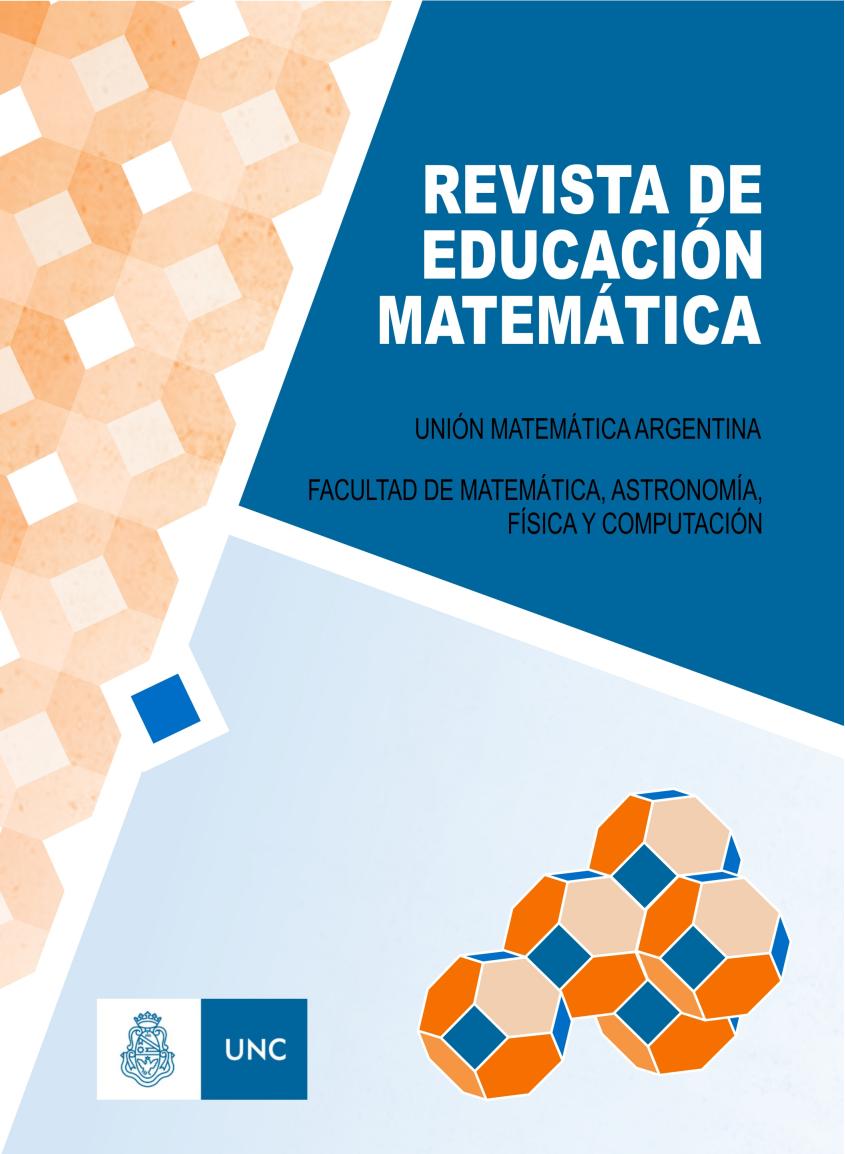Some contributions to problem solving and the use of technology for mathematical thinking: classroom experience of first-year
DOI:
https://doi.org/10.33044/revem.46296Keywords:
GeoGebra, Problem solving, StrategiesAbstract
Mathematics teaching is enriched by problem resolution, apart from knowledge, a great variety of skills and abilities are generated when strategies, representations of the mathematical object and technological tools are incorporated, added to those developed using pencil and paper. The purpose of this article is to describe the processes approaching problem solutions of geometric places from two given elements (a line and a point). Ten second-semester students of the Applied Mathematics program at a university in northern Mexico participated in the classroom experience. The role played using the GeoGebra software was notorious, which helped to explore, verify, predict and discover various types of solutions, using different representation registers, as well as different forms of mathematical reasoning ranging from trial-error to the development of well-structured analytical processes and a variety of solution strategies that involved mastery of knowledge and the systematic use of technology.
Downloads
References
Arteaga, B., Macías, J., y Pizarro, N. (2020). La representación en la resolución de problemas matemáticos: un análisis de estrategias metacognitivas de estudiantes de secundaria. Uniciencia, 34(1), 263-280.
Defaz, G. (2017). El desarrollo de habilidades cognitivas mediante la resolución de problemas matemáticos. Journal of Science and Research, 2(5), 14-17.
Echenique, I. (2006). Matemáticas resolución de problemas. Descargado de
Lehmann, C. (2009). Geometría analítica. México: Limusa.
Mariotti, M. (2009). Artifacts and signs after a vygotskian perspective: the role of the teacher. ZDM Mathematics Education, 41, 427–440. doi: DOI10.1007/s11858-009-0199-z
Mariotti, M., y Maffia, A. (2018). From using artefacts to mathematical meanings: the teacher’s role in the semiotic mediation process. Didattica della matematica. Dalle ricerche alle pratiche d’aula, 3, 50 - 63. doi: 10.33683/ddm.18.4.3.1
Mason, J., Burton, L., y Stacey, K. (1989). Pensar matemáticamente. España: Labor.
National Council of Teachers of Mathematics NCTM. (2000). Principles and Standards for School Mathematics. Reston: NCTM.
Polya, G. (1965). ¿Cómo resolver y plantear problemas? México: Trillas.
Santos-Trigo, L. M. (2016). La resolución de Problemas Matemáticos y el uso coordinado de tecnologías digitales. Cuadernos de Investigación y Formación en Educación Matemática, 11(15), 333-346. Descargado de OAI: https://revistas.ucr.ac.cr/index.php/cifem/oai
Santos-Trigo, L. M. (2021). Resolución de problemas matemáticos artefactos y tecnologías digitales. Revista avance y perspectiva, 7,1. Descargado de https://avanceyperspectiva.cinvestav.mx/
Santos-Trigo, L. M., y Camacho, M. (2018). La Resolución de Problemas Matemáticos y el Uso de Tecnología Digital en el Diseño de Libros Interactivos. Educatio Siglo XXI, 36(3 Nov-Feb1), 21–40. Descargado de https://revistas.um.es/educatio/article/view/349451 doi: 10.6018/j/349451
Schoenfeld, A. (1985). Mathematical problem solving. EUA: Academic Press INC.
Downloads
Published
Issue
Section
License

This work is licensed under a Creative Commons Attribution-ShareAlike 4.0 International License.
Aquellos autores/as que tengan publicaciones con esta revista, aceptan los términos siguientes:
- Los autores/as conservarán sus derechos de autor y garantizarán a la revista el derecho de primera publicación de su obra, el cuál estará simultáneamente sujeto a la Atribución-CompartirIgual 4.0 Internacional (CC BY-SA 4.0), que permite:
- Compartir — copiar y redistribuir el material en cualquier medio o formato
- Adaptar — remezclar, transformar y construir a partir del material
- La licenciante no puede revocar estas libertades en tanto usted siga los términos de la licencia
- Los autores/as podrán adoptar otros acuerdos de licencia no exclusiva de distribución de la versión de la obra publicada (p. ej.: depositarla en un archivo telemático institucional o publicarla en un volumen monográfico) siempre que se indique la publicación inicial en esta revista.
- Se permite y recomienda a los autores/as difundir su obra a través de Internet (p. ej.: en archivos telemáticos institucionales o en su página web) después del proceso de publicación, lo cual puede producir intercambios interesantes y aumentar las citas de la obra publicada. (Véase El efecto del acceso abierto).









